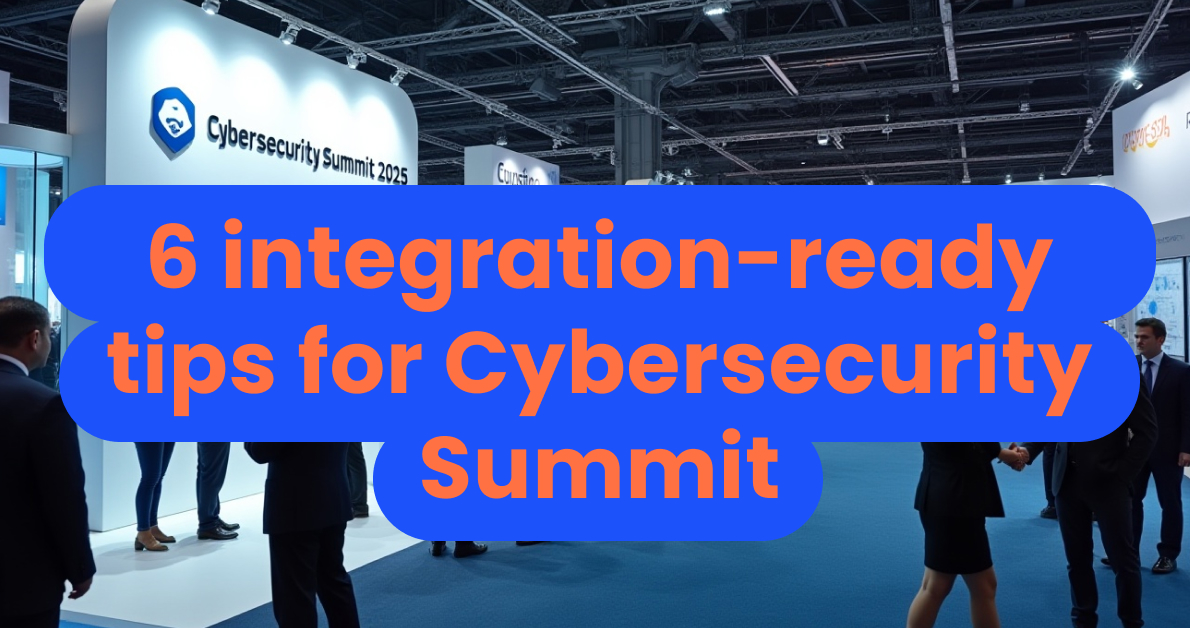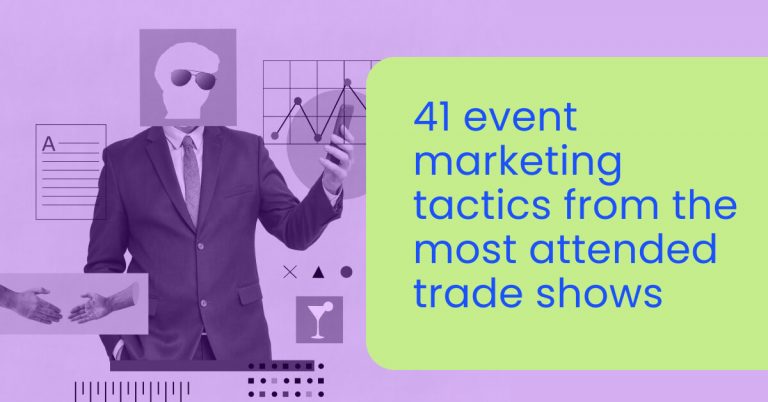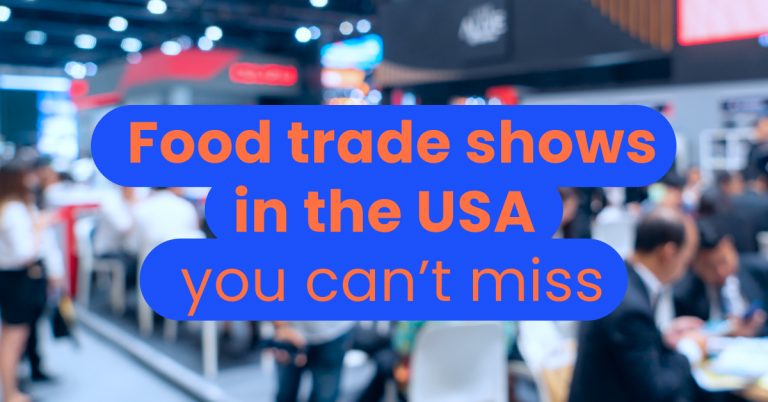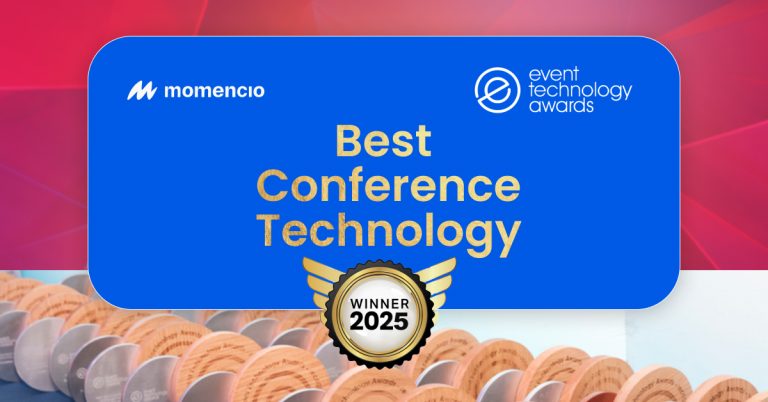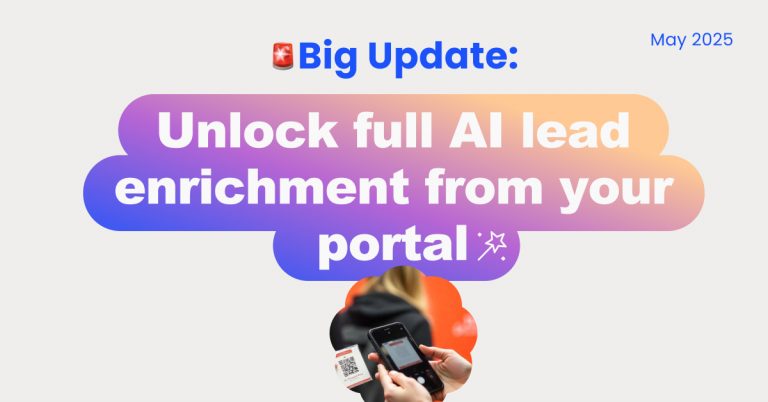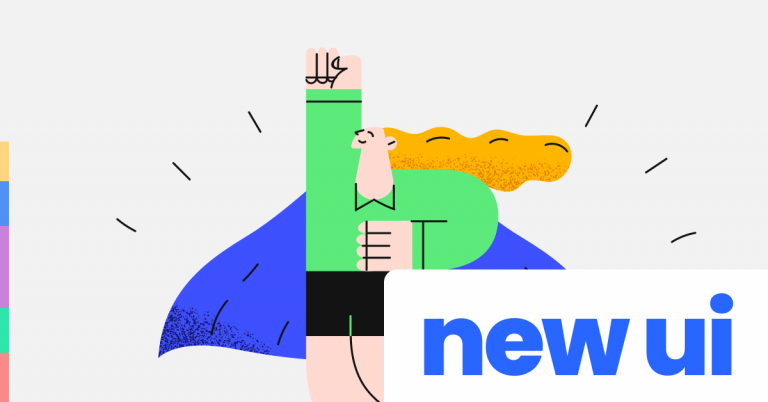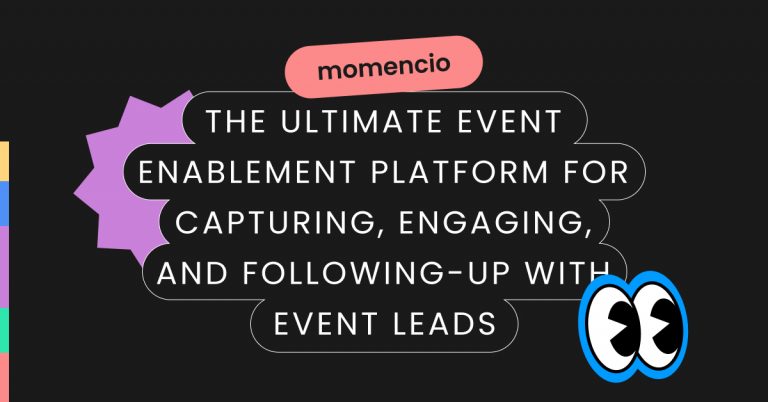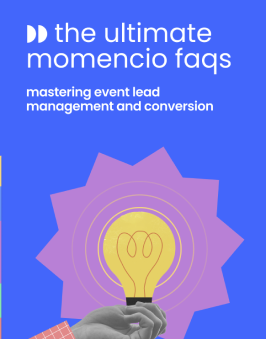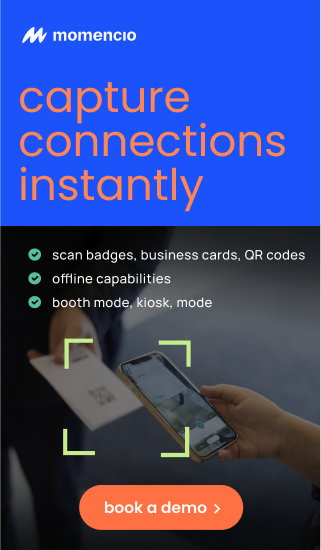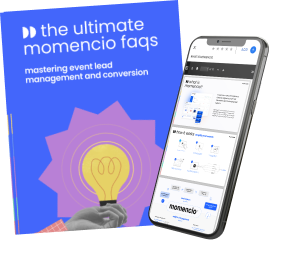At events like Cybersecurity Summit Salt Lake City 2025, standing out isn’t just about having the flashiest booth or the best swag — it’s about proving your tech delivers real business value. With senior-level decision-makers in the room, from CISOs to IT directors, exhibitors face one big question from every visitor: “Will this solution fit with what we already use?”
In fact, a recent report by CyberRisk Alliance found that 74% of security leaders consider integration ease a top three factor in evaluating new technology vendors. That means your success at the Summit won’t just hinge on demos — it depends on how well you show up as “integration-ready.”
And this doesn’t just apply to the tools you’re selling — it applies to how you run your booth, capture leads, and follow up after the event. Because if your event tech isn’t integrated with your CRM, or your follow-ups aren’t aligned with buyer intent, you’re not demonstrating operational fit — you’re demonstrating friction.
This article breaks down 6 practical, integration-focused strategies to help you:
- Capture better leads
- Deliver personalized experiences
- Sync your booth with your sales funnel
- Prove ROI to stakeholders
We’ll also highlight how tools like momencio help exhibitors orchestrate their event stack to convert booth traffic into pipeline — without extra friction. Whether you’re a security vendor, tech solutions provider, or event team member looking to align with enterprise buyers, these tips will help you walk into Cybersecurity Summit Salt Lake City with a game plan and walk out with results.
TL;DR
Exhibiting at Cybersecurity Summit Salt Lake City 2025 means meeting buyers who value tools that integrate seamlessly into their existing tech stack. If your booth experience, lead capture, and follow-up workflows feel fragmented or manual, you risk losing credibility with this integration-focused audience.
This article shares six integration-ready tips to help exhibitors capture better leads, align with buyer expectations, and maximize ROI from the event. These strategies also showcase how a solution like momencio supports seamless CRM integration, personalized follow-ups, and real-time lead intelligence — helping you connect event activity directly to business outcomes.
Tip 1: Use tech that proves your value in real time
At Cybersecurity Summit Salt Lake City, attendees won’t just be browsing—they’ll be evaluating. These are senior-level professionals responsible for selecting and implementing security technologies in complex, high-stakes environments. Their biggest concern? Whether what you’re offering can deliver value immediately and integrate into what they already have.
If your event tech can’t demonstrate value on the spot, you’ll blend into the noise. Exhibitors need more than badge scanners and a fishbowl of business cards. They need to show proof—live and contextual—that their solution drives engagement, qualifies prospects efficiently, and aligns with the goals of potential buyers.
That’s where real-time event technology comes into play.
Exhibitors should be using tools that not only collect leads but also tell them something about each person—what content they viewed, what questions they asked, and how engaged they were during the interaction. Real-time insights aren’t a luxury; they’re a signal to your buyers that you’re operating at their level. After all, the security leaders walking the show floor are used to dashboards, alerts, and metrics. Your booth should be no different.
This is where platforms like momencio offer a competitive advantage. With real-time lead scoring and engagement analytics, your team can immediately understand which attendees are the best-fit prospects—before they even leave your booth. Instead of waiting until post-event to evaluate lead quality, you can prioritize on the spot, adjust your messaging, and tailor your demos to match the buyer’s interest and behavior.
That agility doesn’t just make your booth look smart—it makes your follow-up strategy smarter. When you’re armed with insights in real time, you can follow up with a personalized message that reflects exactly what each lead cared about. That alone can set you apart from competitors sending generic “nice to meet you” emails days after the event.
Bottom line: if your lead capture tool can’t surface value in the moment, you’re not showing up as integration-ready. And at a cybersecurity event, where precision, speed, and relevance matter, that could cost you the sale.
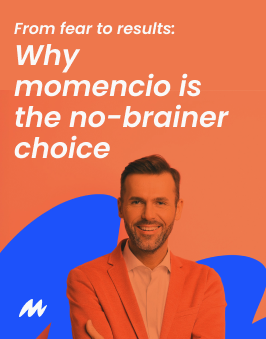
Tip 2: Integrate your booth activity directly with your CRM
Why it matters
Manual lead handling slows down your follow-up and creates friction between your event team and your sales pipeline. At a cybersecurity-focused event where buyers expect seamless technology, manual processes can hurt your credibility.
The risk
If you’re not syncing lead data directly into your CRM, you’re likely:
- Losing context from important conversations
- Delaying your follow-up by days (if not weeks)
- Missing out on sales opportunities while competitors move faster
What integration should look like
- Real-time lead capture that sends contact info and engagement data straight into your CRM
- Automatic tagging for event name, booth interaction, content viewed, or questions asked
- Triggered follow-up workflows that launch based on lead behavior
What to avoid
- Relying on spreadsheets or email exports
- Manually entering notes from business cards after the event
- Following up with generic “thanks for stopping by” messages that lack context
How momencio helps
momencio connects your booth to your CRM in real time. That means:
- Leads are enriched, scored, and categorized before your team packs up the booth
- No manual upload or data cleanup needed
- Sales teams get what they need to start meaningful conversations the same day
Integration isn’t just a tech requirement anymore—it’s a credibility check. At Cybersecurity Summit Salt Lake City, showing up with seamless workflows signals that your company is enterprise-ready.
Tip 3: Personalize follow-ups with pre-built content triggers
The biggest problem with post-event follow-up? It’s usually generic. Most teams send the same email to every lead, regardless of who they are, what they asked about, or how engaged they were.
At an event like Cybersecurity Summit Salt Lake City, this approach fails fast. Attendees expect relevance. They’ve just spent a day evaluating complex security solutions. If your follow-up feels templated or disconnected from the conversation, it’s likely to be ignored.
Do this
- Match follow-up content to specific booth interactions
- Use predefined rules to automate what each lead receives
- Tailor your messaging to what the attendee asked or engaged with
Avoid this
- Sending the same email to every lead regardless of context
- Following up days later with “nice to meet you” messages that add no value
- Manually sorting through leads after the event ends
Use this
- Content triggers tied to engagement (e.g., requested a whitepaper, watched a product video)
- A platform like momencio to build and send relevant microsites or collateral
- Engagement signals to prioritize which leads should get a more personal follow-up
Why it matters
Attendees at Cybersecurity Summit Salt Lake City expect relevance. Personalized follow-ups show you’re paying attention and reflect a level of operational maturity that appeals to enterprise buyers. In a space where trust and precision are essential, this kind of thoughtful communication builds credibility—and pipeline.
Tip 4: Align your demo content with attendee interests
| Traditional approach | Integration-ready approach |
| Static product demos shown to every visitor | Dynamic demos tailored to each lead’s interests |
| Booth reps guess what to show or emphasize | Content is guided by real-time engagement data |
| Manual note-taking on questions or reactions | Platform tracks what each attendee clicks or requests |
| Follow-ups rely on memory or general materials | Follow-ups reference specific content discussed at booth |
When you’re exhibiting at Cybersecurity Summit Salt Lake City, you’re engaging with highly specialized professionals—often with very different priorities. One might be focused on zero-trust architecture, another on secure cloud migration. If you’re showing the same generic demo to both, you’re missing opportunities to connect.
Integration-ready teams let attendee behavior guide the experience. That could mean auto-loading specific demo assets based on a lead’s company, industry, or digital interactions. It could mean tracking which documents they viewed at the booth and queuing up deeper follow-up content that matches those interests.
With a platform like momencio, you can see in real time what topics or materials resonate with each visitor. That data isn’t just useful after the event—it’s what allows your booth team to pivot and present with precision while the conversation is happening.
Personalized demo experiences aren’t about being flashy. They’re about showing the right thing to the right person. And when you’re selling to a security-conscious, tech-savvy audience, that’s how you earn trust—and interest.
Tip 5: Score leads as they engage with your content
Myth: Lead scoring is something you do after the event once all the data is cleaned and uploaded.
Reality: By the time most teams get around to scoring leads manually, the momentum is already gone. At Cybersecurity Summit Salt Lake City, where top decision-makers are actively evaluating solutions, waiting days or weeks to identify high-potential leads is a costly delay.
Myth: All booth visitors should get equal attention and follow-up.
Reality: Not all leads are created equal. Someone who watched your full demo, downloaded your technical brief, and asked about pricing should be treated very differently than someone who grabbed a brochure and walked away.
Myth: It’s too complicated to score leads on the fly during an event.
Reality: With the right platform, real-time scoring is easy. Tools like momencio track attendee interactions and assign scores based on engagement signals: content viewed, time spent, questions asked, assets requested, and more. That means you can prioritize your hottest leads while the event is still in progress—not weeks later.
Why this matters
Smart lead scoring isn’t just an internal benefit—it shapes your team’s behavior at the booth, improves follow-up focus, and signals professionalism to buyers. When your sales team follows up with urgency and context, it feels intentional. That’s what turns an event conversation into a sales conversation.
Tip 6: Don’t let event data go dark post-summit
Before
- Leads are exported into a spreadsheet after the event
- Sales and marketing scramble to clean, upload, and organize contacts
- Follow-ups are delayed or duplicated
- No clear way to measure what content performed best
- Weeks pass before results are reviewed — if at all
After
- Leads are automatically synced into your CRM with enriched data
- Follow-ups are triggered based on individual engagement levels
- Sales has immediate access to qualified, prioritized leads
- Engagement analytics show which assets and demos worked
- Marketing can report on pipeline contribution and ROI within days
The gap between these two scenarios is integration. When your event stack works as a system—capturing, enriching, syncing, and analyzing data automatically—you move faster, smarter, and more strategically.
At Cybersecurity Summit Salt Lake City, attendees expect you to operate at their level. If your data goes dark once the booth shuts down, you’re not just losing leads—you’re missing the point of why you’re there.
Platforms like momencio help keep the lights on. From initial interaction to post-event reporting, they ensure your event data feeds your funnel, not your desktop folder.
Conclusion
Success at Cybersecurity Summit Salt Lake City 2025 won’t come from showing up with a flashy booth and hoping for foot traffic. It will come from being strategic, integrated, and responsive — before, during, and after the event.
Integration isn’t just a feature—it’s a mindset. It’s how you prove to highly technical buyers that you understand operational efficiency, tech stack compatibility, and enterprise-scale thinking. By aligning your event workflows with these expectations, you do more than collect leads — you build momentum.
Let’s recap the 6 integration-ready tips:
- Use tech that proves your value in real time
- Integrate your booth activity directly with your CRM
- Personalize follow-ups with pre-built content triggers
- Align your demo content with attendee interests
- Score leads as they engage with your content
- Don’t let event data go dark post-summit
If you’re serious about capturing the right leads, activating them quickly, and showing measurable ROI, this isn’t optional—it’s foundational.
Ready to make your next event as smart and integrated as your product?
See how momencio can help you turn booth traffic into pipeline — without the post-event scramble. Book a demo with momencio.
FAQs
- What type of leads can I expect at Cybersecurity Summit Salt Lake City?
- You’ll meet CISOs, IT security leaders, and enterprise decision-makers — all focused on finding technologies that align with their current systems and solve high-stakes security challenges.
- How quickly should I follow up after the event?
- Ideally, within 24 hours. With an integration-ready platform, you can start personalized follow-ups before the event even ends.
- What should I track to measure ROI from this event?
- Track lead engagement, demo interactions, content downloads, and how many leads move into your CRM and pipeline. Tools like momencio provide these metrics automatically.
- How can I make my booth content more relevant to visitors?
- Use engagement data and pre-configured content triggers to show the most relevant materials based on each attendee’s behavior.
- Is it hard to integrate lead capture tools with our CRM?
- Not with the right tool. momencio is designed to integrate seamlessly with major CRMs and marketing automation platforms — no coding required.
